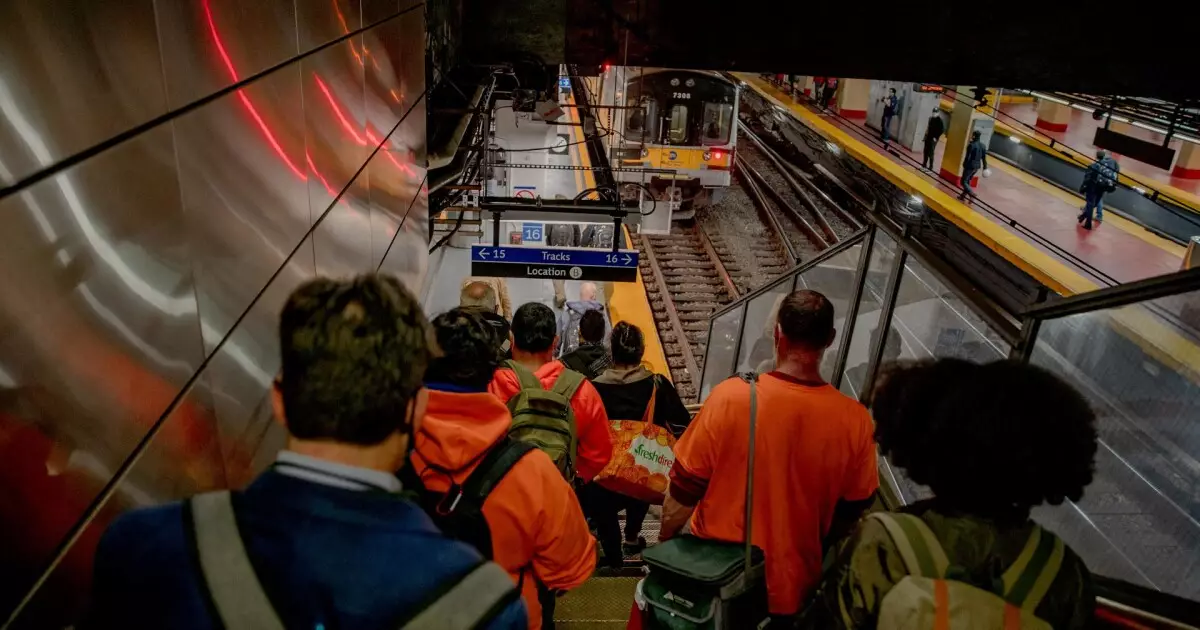In an audacious shake-up, the Trump administration has seized control of the $7 billion transformation of New York’s iconic Pennsylvania Station, marking a significant pivot away from the Metropolitan Transportation Authority (MTA). The Federal Railroad Administration (FRA), under Secretary Sean Duffy’s leadership, has taken the helm alongside Amtrak, the owner of the train station. This controversial development has elicited mixed reactions, yet it underscores a crucial truth: when faced with systemic inefficiencies, strong leadership may be the clarion call for progress.
The Trump administration’s decision to cut a federal grant designed for the station’s development, allegedly saving $120 million, raises eyebrows while simultaneously garnering praise from state leaders. New York Governor Kathy Hochul, in a statement echoing optimism, expressed her gratitude toward the administration for taking the reins. While it’s heartening to hear gratitude from local leaders, it’s imperative to question whether a federal approach can genuinely pave the way for structural improvements or whether it merely masks deeper issues surrounding the MTA’s management.
Political Significance of Procurement and Funding
The dynamics at play are laden with political implications. The decision to bypass the MTA is not just a financial maneuver; it signifies a shift in who holds the power and responsibility for crucial infrastructure projects in one of the nation’s busiest transit hubs. Duffy’s assertion that the MTA embodies “inefficiency, waste, and mismanagement” may ring true in some respects. However, it raises valid questions about accountability and the intentions behind federal intervention in local projects. Will this intervention lead to meaningful change in a system that has long been marred by bureaucracy and red tape?
The fine balance between federal authority and local governance is a contentious aspect of the American political landscape. By directing funds and pursuing structural oversight on this project, the Trump administration may inadvertently sow seeds of contention with local authorities, including Hochul and the MTA. The looming April 20 deadline imposed upon the MTA to cease a contentious congestion pricing program only adds fuel to this already fiery political discourse. On one side, there’s a strong argument for reducing congestion in one of the most densely populated areas in the U.S. Alternatively, imposing such measures raises questions about how fair and effective they truly are.
Reflecting on the Oversight and Vision for Penn Station
The overall vision for the Penn Station renovation entails more than surface-level aesthetic upgrades; it encompasses the creation of a 250,000 square-foot, single-level facility that promises improved amenities, retail spaces, and mixed-income housing. This is a step that reflects the modern demands of urban living, making transit spaces not merely functional but an integral part of the urban environment. However, while the vision is ambitious, the execution remains in question.
Hochul’s revisions to the plan since taking office signal a refreshing approach to urban renovation—one that acknowledges the need for modern transit hubs. Yet the underlying question remains: can this project be completed effectively under a centralized federal oversight that has historically struggled with accountability? The push for a cohesive approach to transit revitalization should not override the significance of local insight and expertise.
Roadblocks Ahead: Navigating the Future
As the project gears up, it’s against a backdrop of intense scrutiny not just from politicians, but from an increasingly frustrated public. An MTA-led response spotlighting recent capital improvements, including work completed on the 33rd Street Concourse, suggests that local stakeholders still have significant contributions to make. With two-thirds of the station’s ridership relying on MTA services, dissent against federal overreach poses both a challenge and an opportunity for dialogue on governance in transit.
The road ahead for Pennsylvania Station’s transformation is fraught with potential hurdles—from budgetary constraints to political pushback. Still, the need for a fundamentally reformed transit hub in New York City cannot be overstated; it’s a symbol of modern urban infrastructure. In navigating this complex landscape, the U.S. must prioritize effectiveness over political gamesmanship, cutting through the partisan fog to focus on what truly benefits the aching city—the people it serves. Ensuring that federal dollars are spent wisely and that outmoded bureaucratic practices don’t siphon resources is essential if this ambitious rejuvenation is to fulfill its promise.

